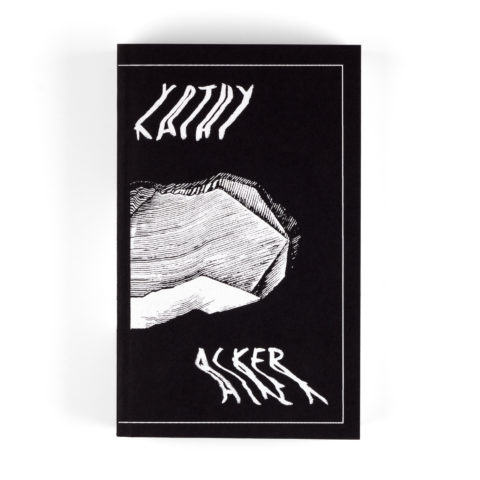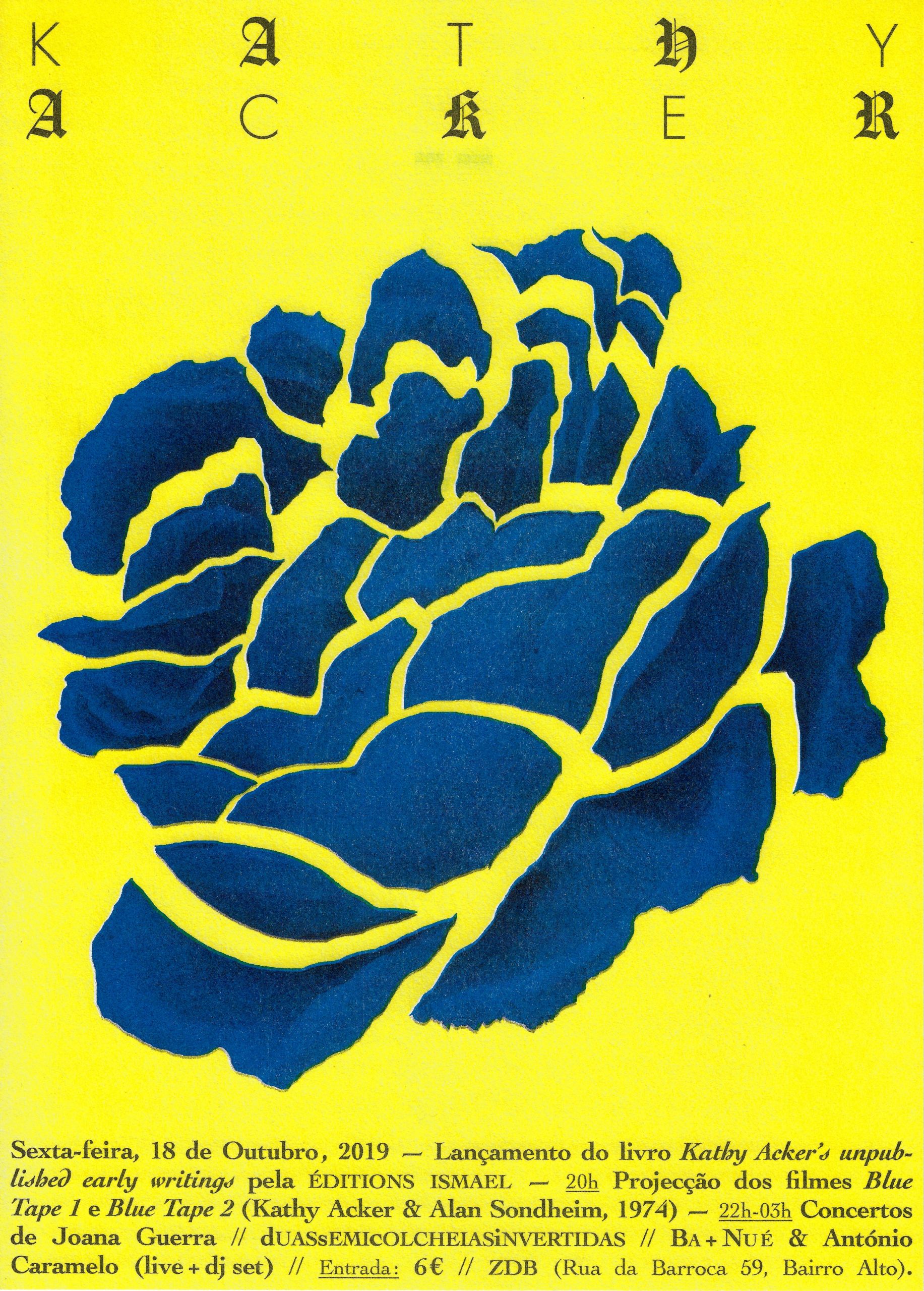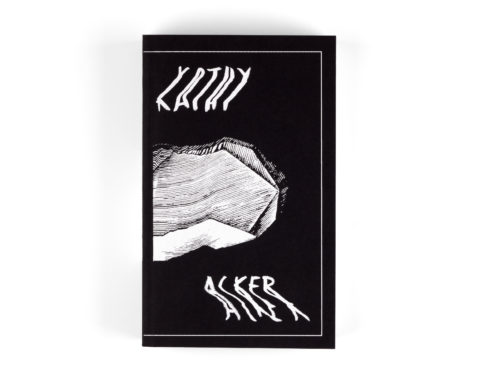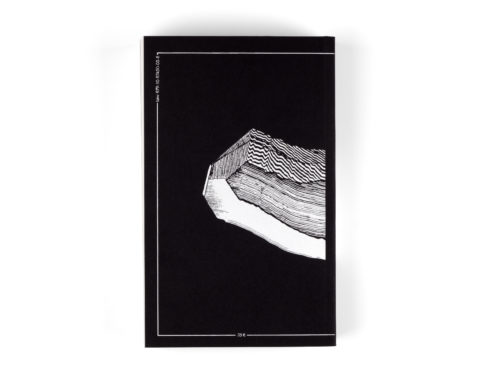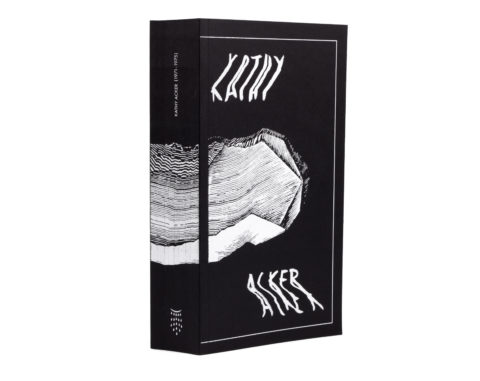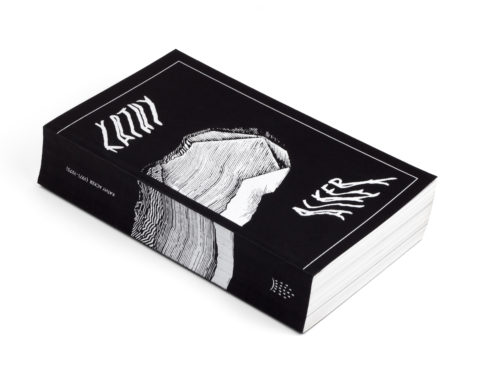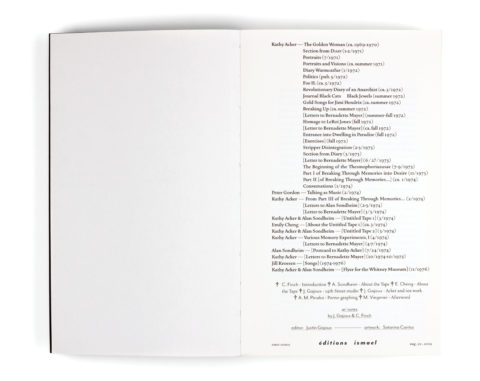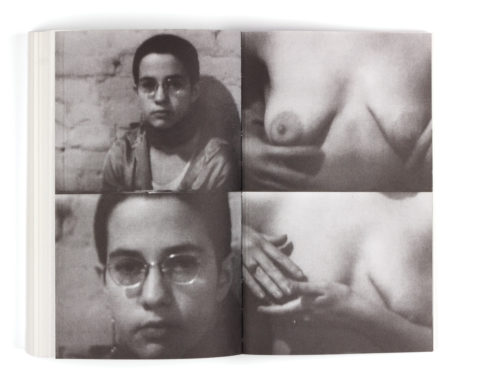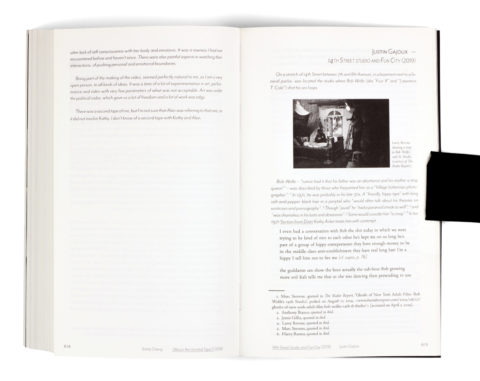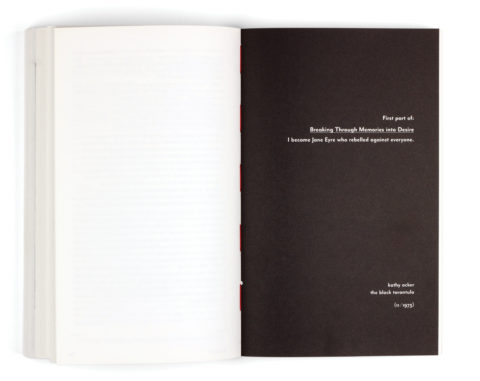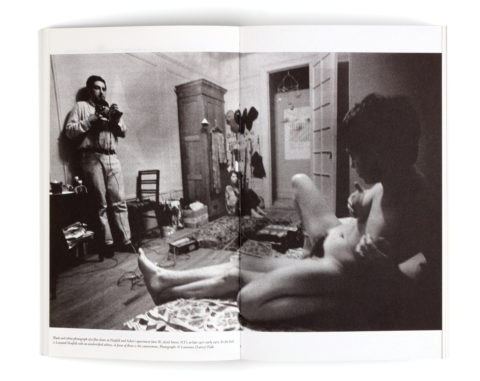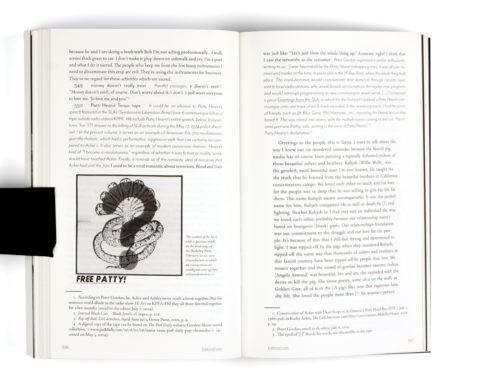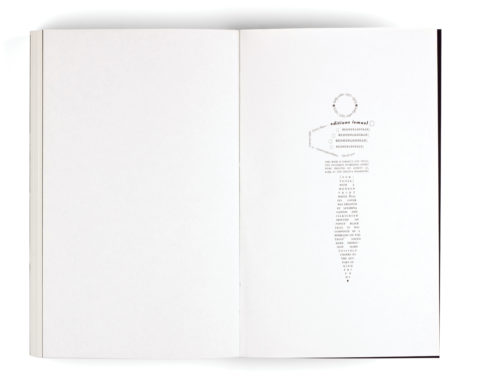SOLD OUT
Upcoming revised and augmented edition.
First scientific edition of Kathy Acker’s unpublished early writings from 1969 to 1976. Comprises nearly all of the typewritten texts from this period from among the various archive depositories where Acker’s papers can currently be found.
Also features the transcription and presentation of two experimental videos Kathy Acker created with Alan Sondheim in 1974.
This book is the first attempt to produce a scientific edition of a large number of Kathy Acker’s unpublished early works. Apart from the posthumous 2002 publication of the manuscript Rip-off Red, Girl Detective and The Burning Bombing of America: The Destruction of the U.S. in a single volume by Amy Scholder for Grove Press, as well as Gabrielle Kappes’ chapbook, no other important publication on this subject has been attempted.
These—mostly unpublished—texts were all written between 1969 and 1976. However, they are representative of Acker’s published output only for the period running from 1971 to early 1974. These texts all exist as “clean” typewritten copies, probably intended to be kept, shown, and maybe even published. The editor chose not to include Acker’s manuscripts, and the transcriptions in this volume were taken directly from the original typescripts. The original pagination, manuscript addenda, missing pages, and other idiosyncrasies of each document have been preserved, and our editorial notes at the end of each text all feature a detailed material description of the source version used.
The volume is laid out chronologically. Consequently, the dates for numerous texts were estimated based on their content and form, as well as on external testimonies (an estimate that is then justified and defended).
The collection shows how prolific, diverse, and ever-evolving Acker’s work was in these early years. It isn’t, however, the complete collection of her early works. More typescripts exist in the Fales Library (in New York), which are not featured or even alluded to in this book. Their publication and analysis may in the future suggest a whole new set of interpretations that will complete, or possibly contradict, the present editor’s exegesis. Moreover, comparing the typescripts with the manuscripts will no doubt inspire new perspectives on Acker’s creative process and intentions during these years.
